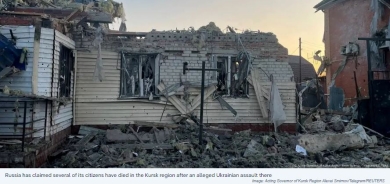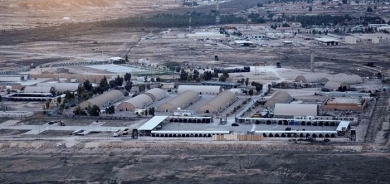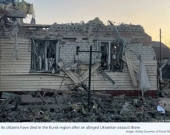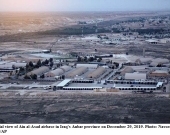AirMule military drone set to dodge trees in tests

The maker of a drone designed to carry loads of up to 500kg (1,100lb) says it plans to see if it can fly itself between trees and other obstacles before the end of the year.
The Israeli company behind the AirMule has already successfully tested it flying itself without being tethered to the ground for safety reasons.
It aims to be able to deliver models to military customers in the next decade.
One expert said the drone was impressive but raised safety concerns.
Urban Aeronautics has received financial support from the Israeli government for the project, and its chief executive said it could help save lives.
"[It could fly to] anyone out in the field who needs water, food, batteries, supplies, medical equipment and so forth," Rafi Yoeli told the BBC.
"Later, it could be used to fetch soldiers that you don't want to leave behind or are wounded.
"There are plenty of situations where you cannot send a helicopter - for example, in the middle of fighting where you want to evacuate people from a street or from a narrow roof.
"Eventually, there could be civilian applications, such as rescue missions in the mountains or flying into disaster areas - for example, nuclear facilities where no person in a helicopter could get in."
'Expensive aircraft'
Urban Aeronautics has carried out nearly 200 test flights of the AirMule, including its first untethered trial at the Megiddo airfield in northern Israel on 30 December.
The machine, 6.2m (20ft) long and 2.3m (7.5ft) tall, takes off vertically, like a helicopter.
The company aims to make it able to fly at a maximum speed of 180km/h (112mph) and as high as 18,000ft (5,500m) once a more powerful turboshaft engine is fitted.
Mr Yoeli said his team also needed to upgrade the aircraft's flight control system to make it capable of flying in rain and other bad weather.
In addition, he said, further work had to be done before he could say what lifespan it would have.
"When you supply a vehicle to the customer, you need to offer them a guarantee that it will work for 500 hours or 1,000 hours or so many take-offs and landings," he said.
"So, we need to develop the knowledge of the lifespan of the components and maybe redesign some of them.
"This will be an expensive aircraft.
"There is nothing out there that has the dimensions of a Humvee [military vehicle] yet can take off vertically with 500kg of supplies and fly for an hour."
Before the end of 2016, he added, the plan was to demonstrate it could fly itself at low heights over obstructed terrain without the risk of a collision and to carry out the first robotic delivery of a parcel at a destination.
Safety issues
A drone expert from Imperial College London said the aircraft could prove groundbreaking, but the engineers would have to prove it did not pose a threat to other aircraft or people living under its flight path.
"The vehicle design and control system is impressive," said Dr Ravi Vaidyanathan.
"Evacuation of injured people, delivery of supplies or equipment, and intelligence support could represent the first use of autonomous systems in defence and humanitarian relief operations.
"But a vehicle this size obviously brings very significant safety issues.
"Experiments for large drones to be remotely piloted in civilian airspace have been conducted but are still in very early days, even for vehicles with well-established flight characteristics."
BBC













